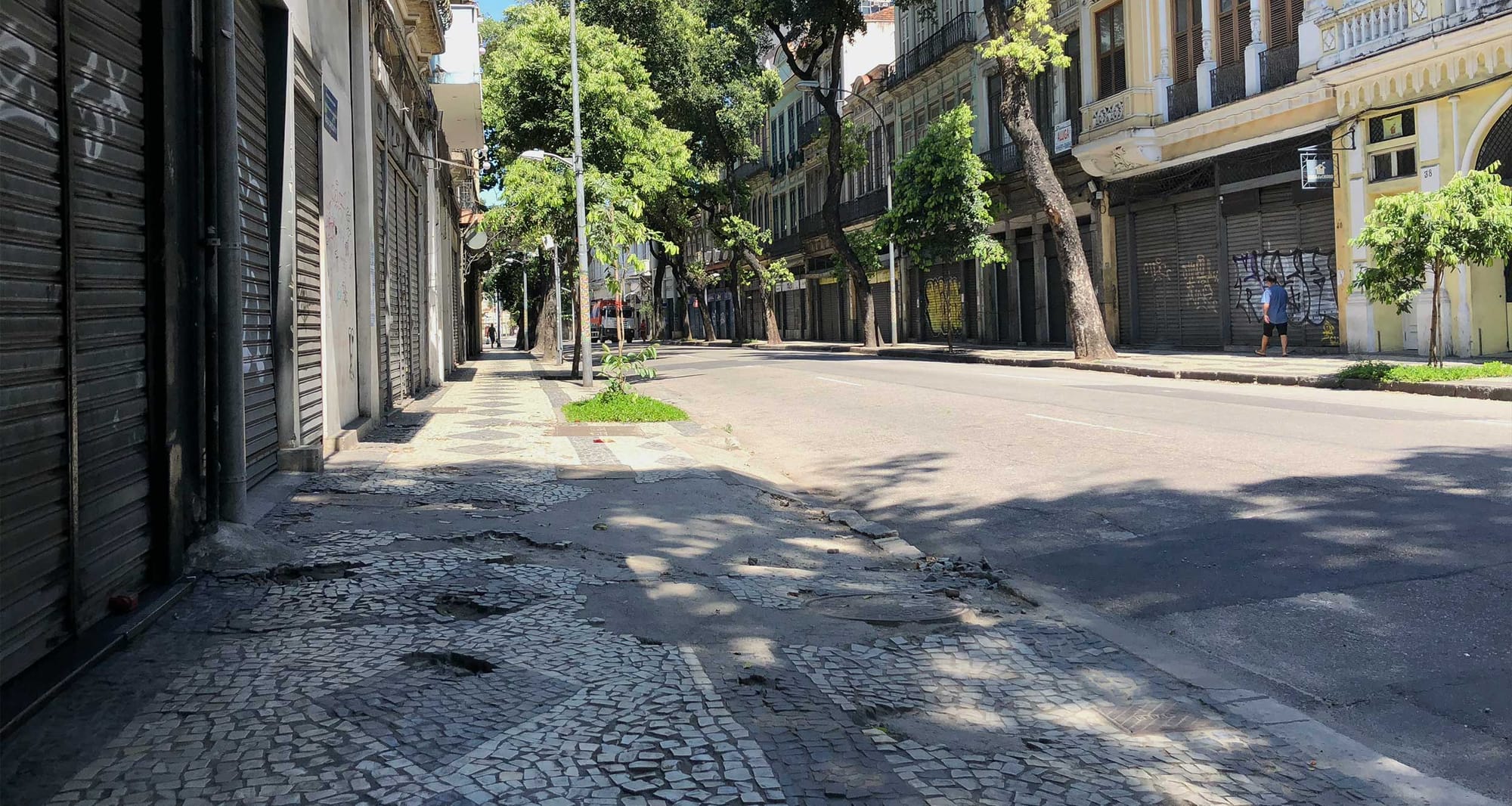
The sidewalks in Rio de Janeiro are generally wheelchair accessible. During my travels in the city, I rolled my wheelchair nearly 50 miles to become familiar with sidewalk accessibility. I saw many sidewalks and a lot of variation, but found the accessibility of Rio de Janeiro sidewalks to be good on the whole.
What does sidewalk accessibility in Rio de Janeiro look like? Let’s take a look – you’ll notice accessible features like curb cuts/curb ramps and crosswalk signals are common.
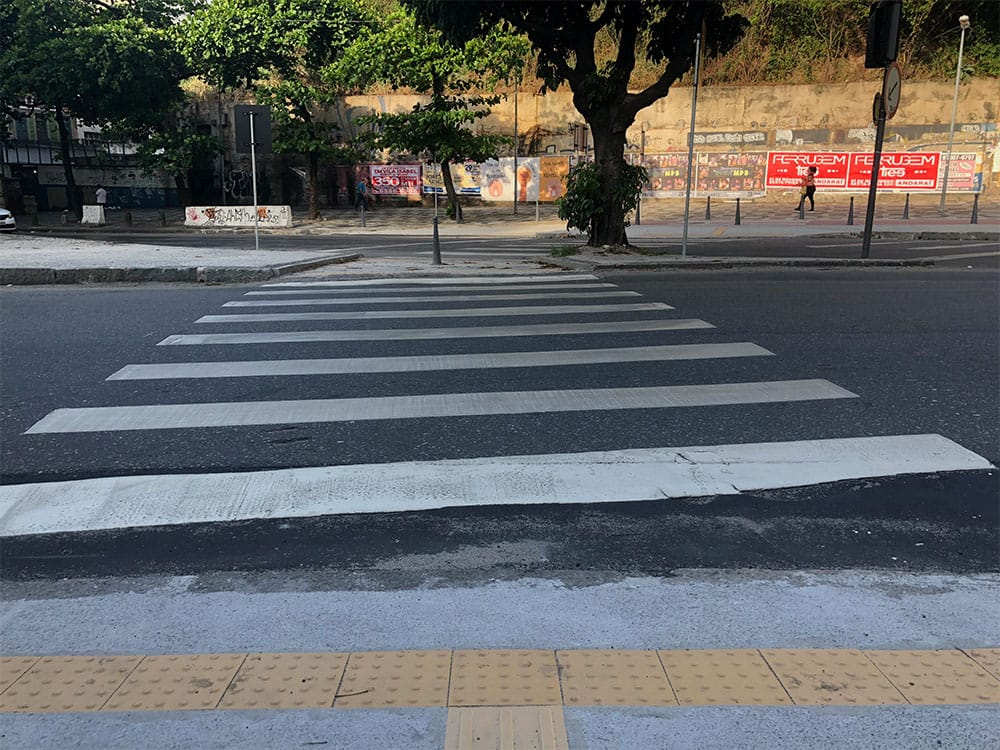
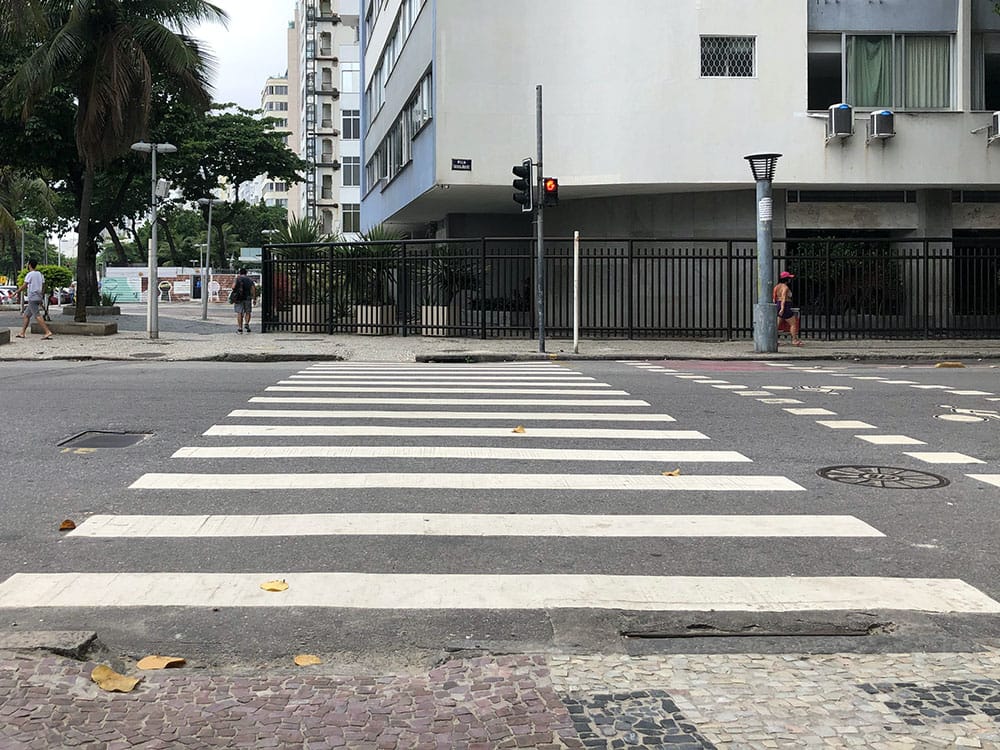
Crosswalks are generally well marked, but not all have crossing signals. All pedestrians, including wheelchair users. must watch for oncoming traffic when crossing a street. The design of crosswalks varies, with some having a level pathway across the entire width, while others have a specific access point.

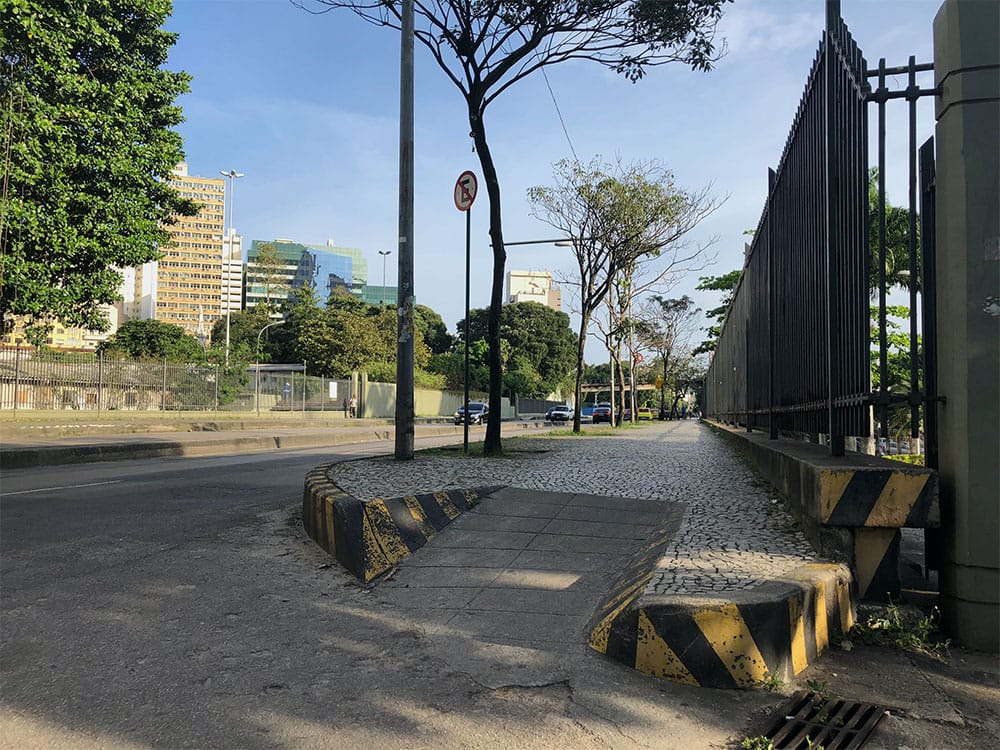
Curb ramps themselves vary in design. Most provide level access, but some have a step or lip of one inch or more. As a power wheelchair user, I rarely encountered a barrier that my chair could not overcome. Due to the fact that some curbs are high, some curb ramps are steep.

Like in many other cities around the world, scooters block sidewalks in Rio de Janeiro. Moving them out of the way or going around is the only thing you can do.
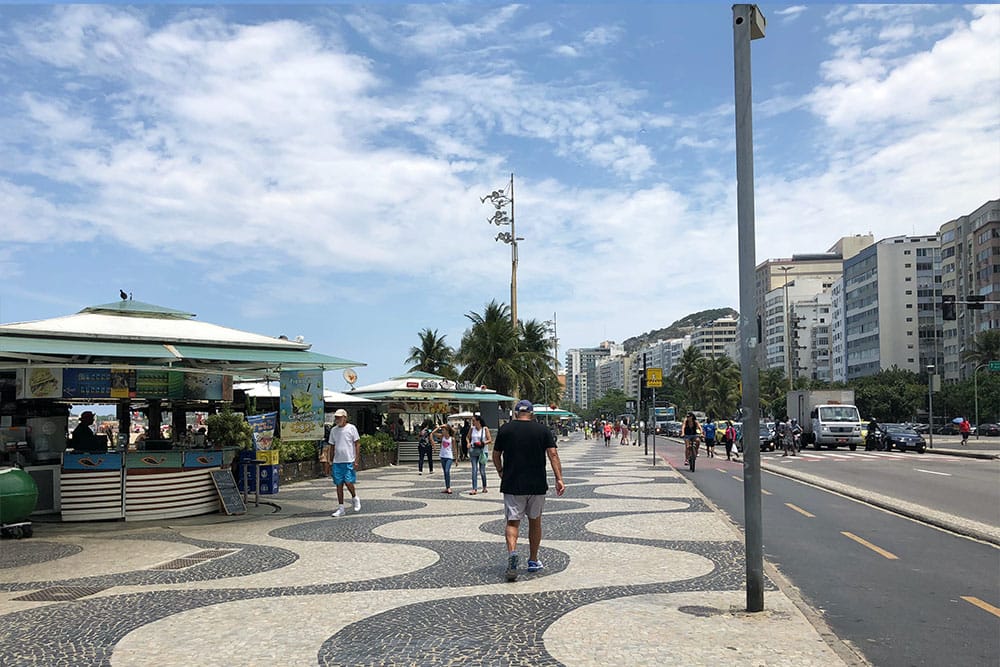
In keeping with the Portuguese style of design, many of Rio’s sidewalks are composed of stone tiles. This makes for a bumpy ride. Other sidewalk surfaces include cement, brick cobblestone.
The greatest barrier wasn’t the surfaces themselves, but disrepair. Many of the city’s sidewalks are broken, cracked and littered with potholes. This doesn’t usually make a sidewalk unusable, but it’s important to watch out for obstacles.
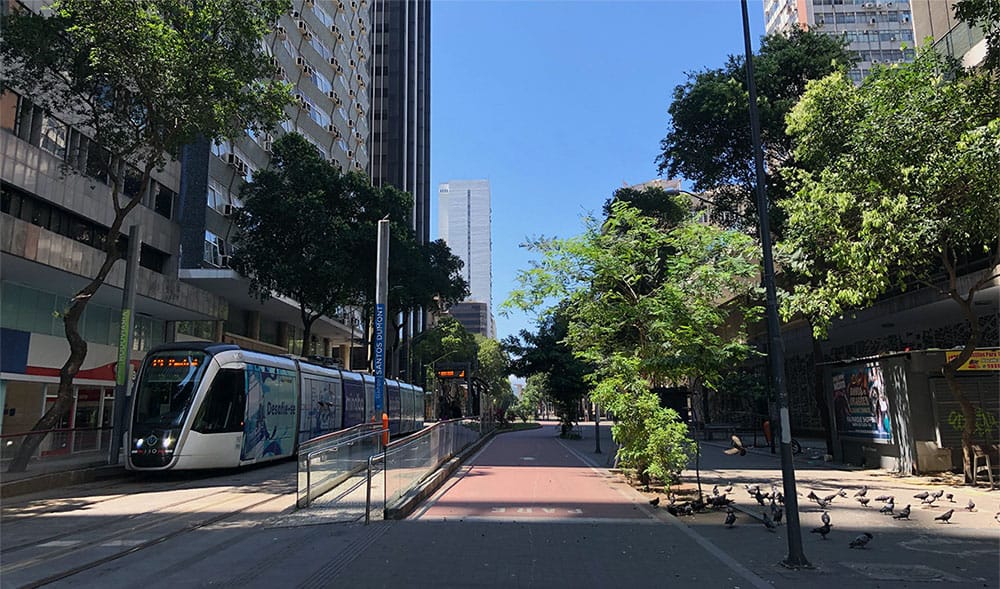
Dedicated bike lanes run throughout many parts of the city, and provide a much smoother surface on which to operate a wheelchair. I used bike lanes whenever possible, to avoid the bumpy tile sidewalks that are common.
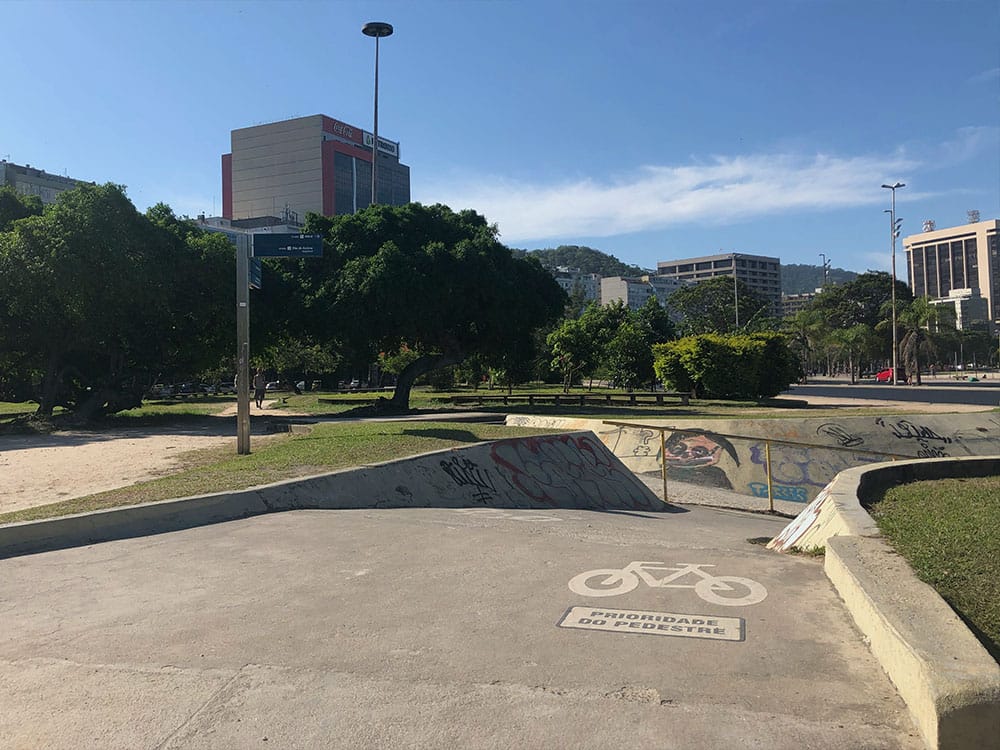
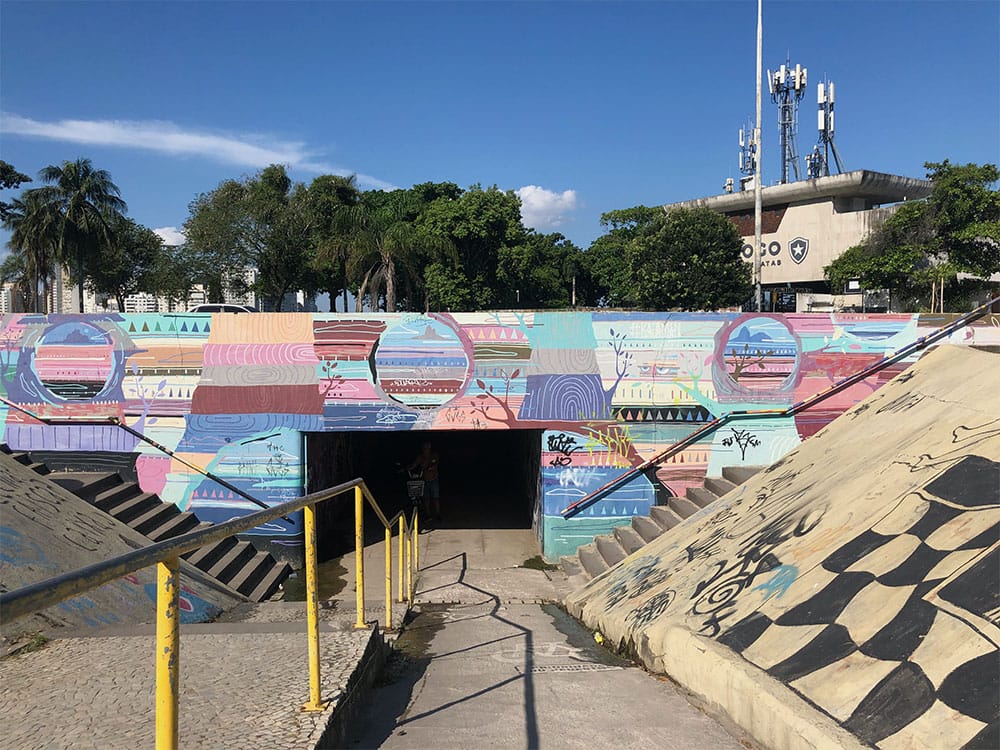
You may encounter tunnels that run underneath the roadway. These tunnels are intended for use by both pedestrians and bicyclists. The bike lanes are wheelchair accessible, but oftentimes very steep. Manual wheelchair users would likely require assistance navigating the steep climbs.
In all, I found it fairly easy to get around Rio de Janeiro’s streets and sidewalks with my wheelchair. There were obstacles, but I always managed to locate an accessible route around or through.



